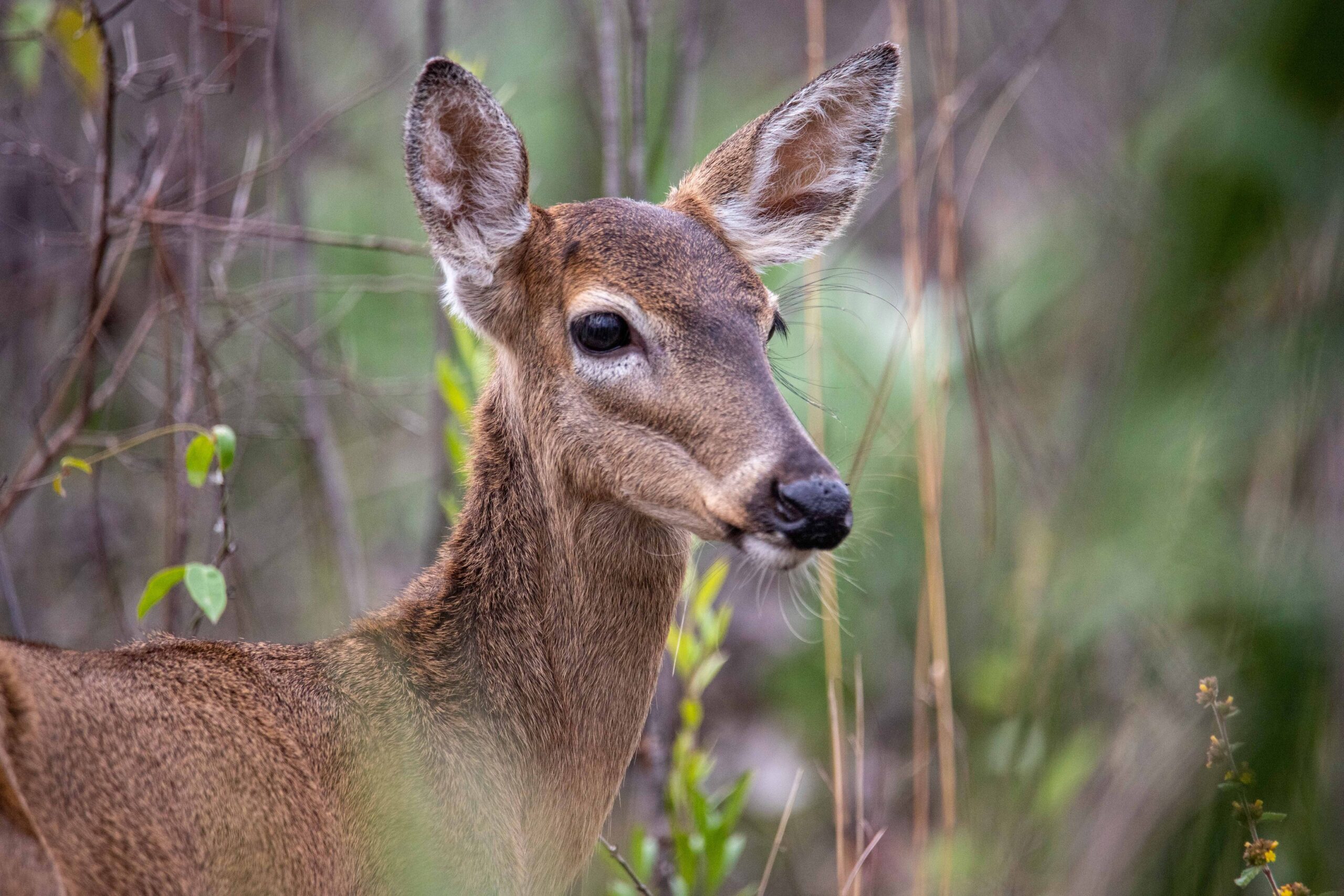
By Zaria Johnson, Ideastream Public Media
This story was originally published by Ideastream.
Northeast Ohio’s parks are frequented by white-tailed deer, wild turkeys and a variety of squirrel species throughout the year, along with migratory birds, monarch butterflies and more. But where do these critters spend their winters?
During the winter season, native species have three options: hibernate, migrate or stick it out.
“It’s determined by a variety of things,” Portage Park District Education Program Coordinator Holly Stoneberg said. “So first and foremost, it’s their genes. What has helped their populations survive for as long as they have (is) what continues to allow their species to survive. So it’s just, naturally in them, and then there’s some organisms that kind of play it by ear.”
Some animals use different cues, like daylight, to figure out what to do, naturalist Janean Curfman with Summit Metro Parks said.
“Daylight, that’s usually the number one cue that tells plants and animals to change what they’re doing or to drop their leaves or whatnot, because it’s the most consistent,” Curfman said. “Lesser than that, you have temperature, precipitation, all of those other environmental factors.”
These cues tell animals when to begin and end migration, and guide many migration patterns, Curfman said, although winter poses threat to animals primarily due to colder temperatures and lack of food sources, Curfman said.
“Herbivores are going to have a much harder time finding food, anybody who relies on insects is going to have a harder time and even carnivores, when much of their prey is going to sleep or completely going away,” she said. “Then you’ve got lack of daylight, so predators that rely on eyesight are going to have less time in the day to find food, and snow covering the ground, making it difficult to find food.”
But still, most species are prepared for winter, Lorain County Metro Parks Outdoor Experience Manager Bev Walborn said.
“Most animals are very prepared for winter. Winter normally doesn’t take them by surprise,” she said. “Some of our mammals will have thicker fur. They also will consume larger amounts of food and have stores of fat that will help them get through the winter. Or they might find places where they can shelter.”
In Northeast Ohio, the true hibernators are groundhogs and bats, Walborn said, while other animals like squirrels, skunks and raccoons engage in a short-term hibernation called torpor. But changes to an animal’s seasonal behavior takes generations.
“Organisms don’t evolve, the species evolves. So, it has to be passed down through generations,” she said. “It’s what’s allowing them to survive because the environment is always and will always be changing. So, who’s the best suited to survive?”
A few warmer winter days likely won’t impact an animal’s seasonal behavior much, since it takes generations for species’ patterns to change, Stoneberg said.
One of the biggest risks of the warmer winter weather, Curfman said, is losing the alignment between bird migration and seasonal plant blooms.
“They have evolved over time to migrate so that as they are migrating, there are berries and seeds and things that are ripening at just the right time,” she said. “But if factors change and if a berry starts ripening sooner and then eventually falls off the bush before the bird even gets here, they might run out of food sources.”
A loss in food could mean some of the region’s native species could move elsewhere for the resources they need, Curfman said, meaning Northeast Ohio’s indigenous wildlife may be harder to find.
Catch more news at Great Lakes Now:
Cleveland’s Icebreaker Wind project on hold due to rising costs, pushback
I Speak for the Fish: The great seasonal flip
Featured image: A close-up photo of a White-tailed Deer in a Pineland forest. (Credit: National Park Service photo by Federico Acevedo)




